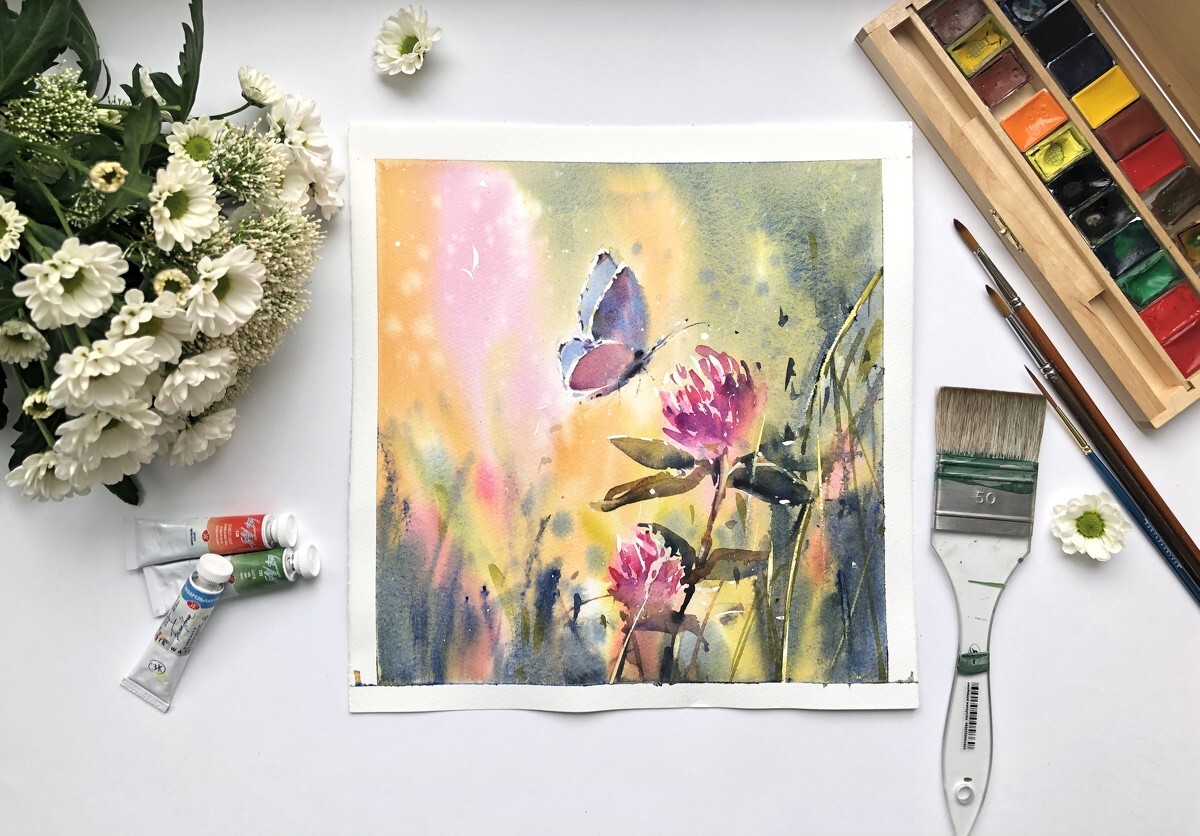
Let's get down to a preparatory drawing. It is the most pleasant step of a process.The teacher will show some tricks and points to facilitate your work. In this article, we will work on a blurred background and a crisp foreground. The goal is to make the picture realistic with some abstract features. Remember to take care of the atmosphere and light of the picture.
Keep the position of elements at their places. Pay attention to the general shapes of drawing avoiding too many details. Follow the outline of the leaves and a clover’s stalk. Take into account the plasticity of a flower. Make sure to clean up the excesses.
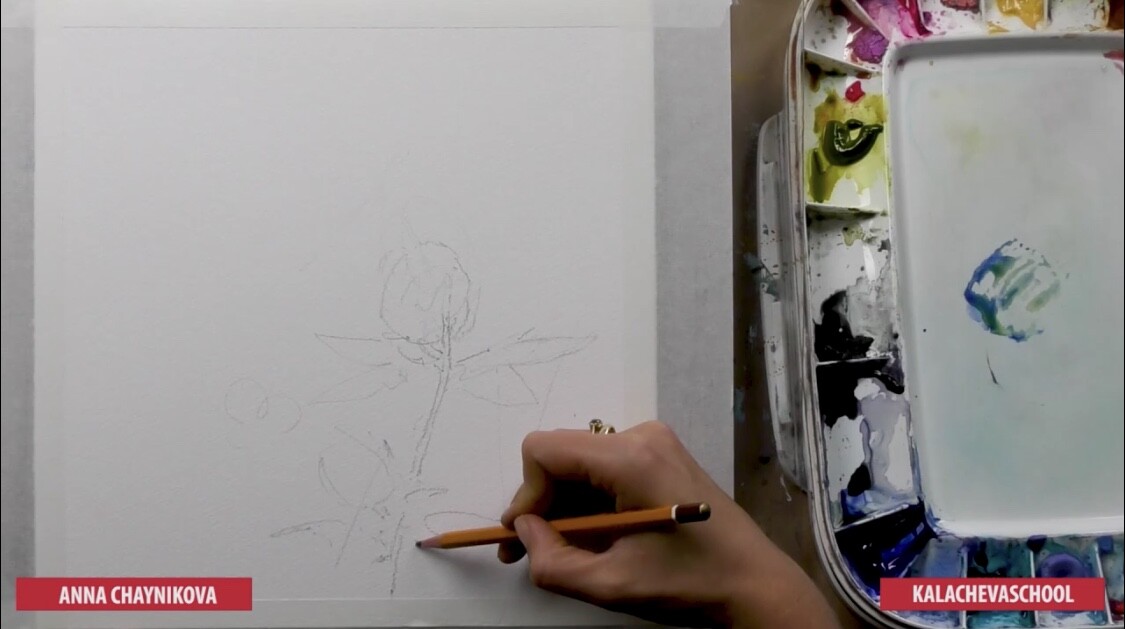
Now let’s draw a butterfly. We have to see which wing is in the front view. Try to catch the silhouette beautifully. Mark the places of highlights, where you can put some paint specks to give the effects of sunny dust.
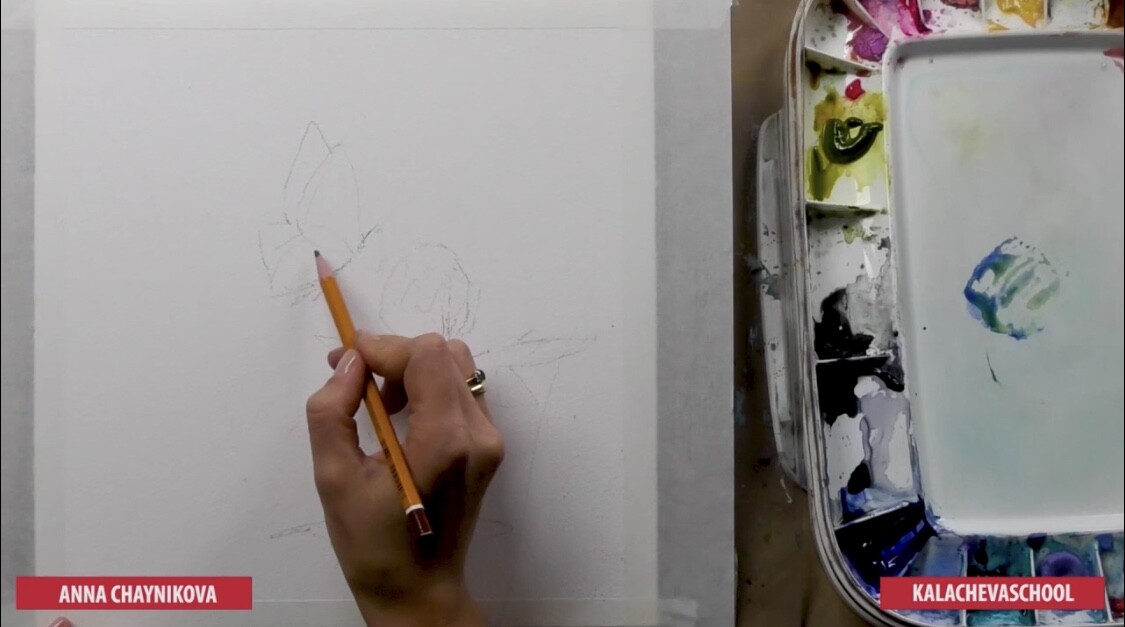
At this point, we take a mask. Take a different brush from the one that you paint to avoid damaging it. It is better to use a synthetic brush. Some painters soap up the bristle for better effects of applying a mask. Work carefully in the same manner as painting. Put strokes on highlighted areas. We apply gently to have a slight effect on the white zones of a butterfly’s wings. The same thing is for the tips of the leaves. Also, put some mask’s marks on a clover itself. Be careful to put strokes only on the areas of illuminated parts on the top. Finish by applying elsewhere on the grass and a stalk. Carefully speck some very little quantity of the mask on a canvas. Protect your clothes!
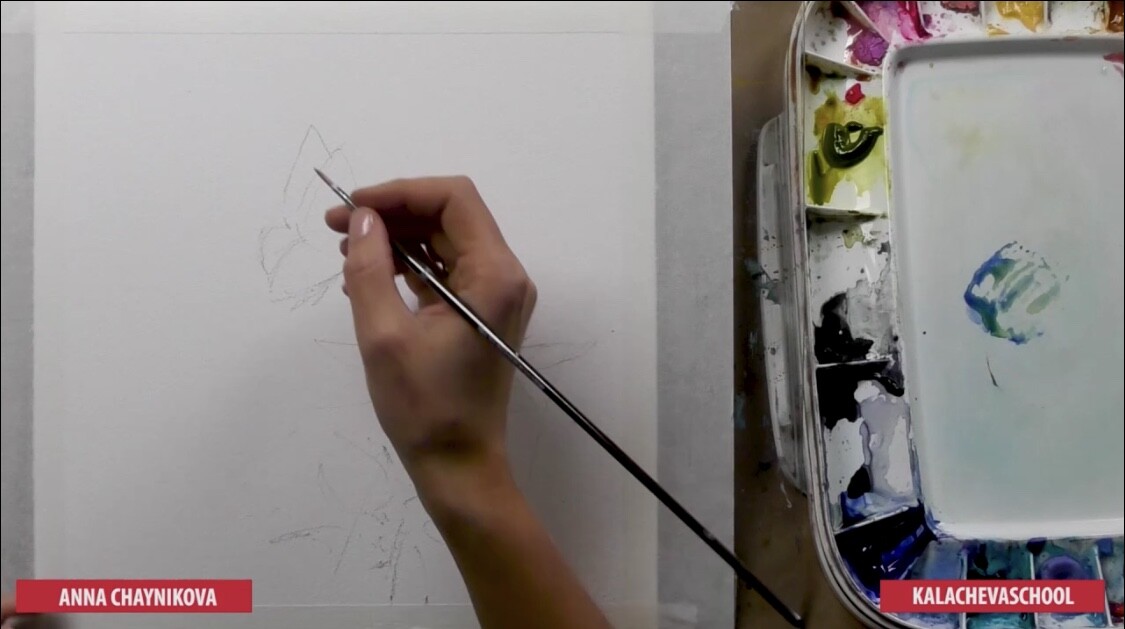
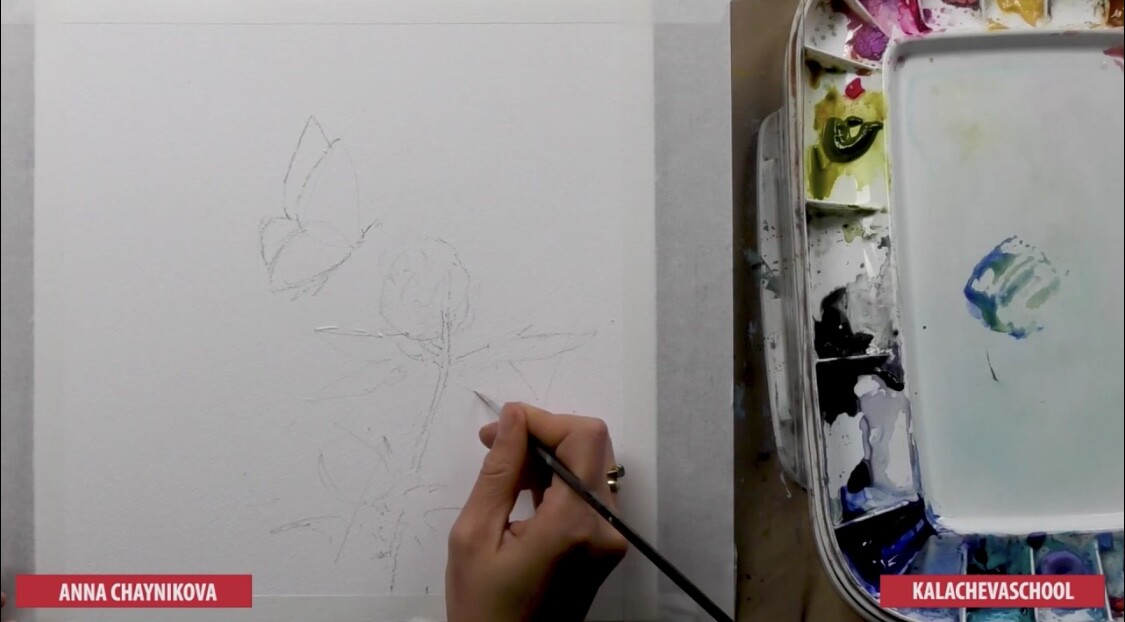
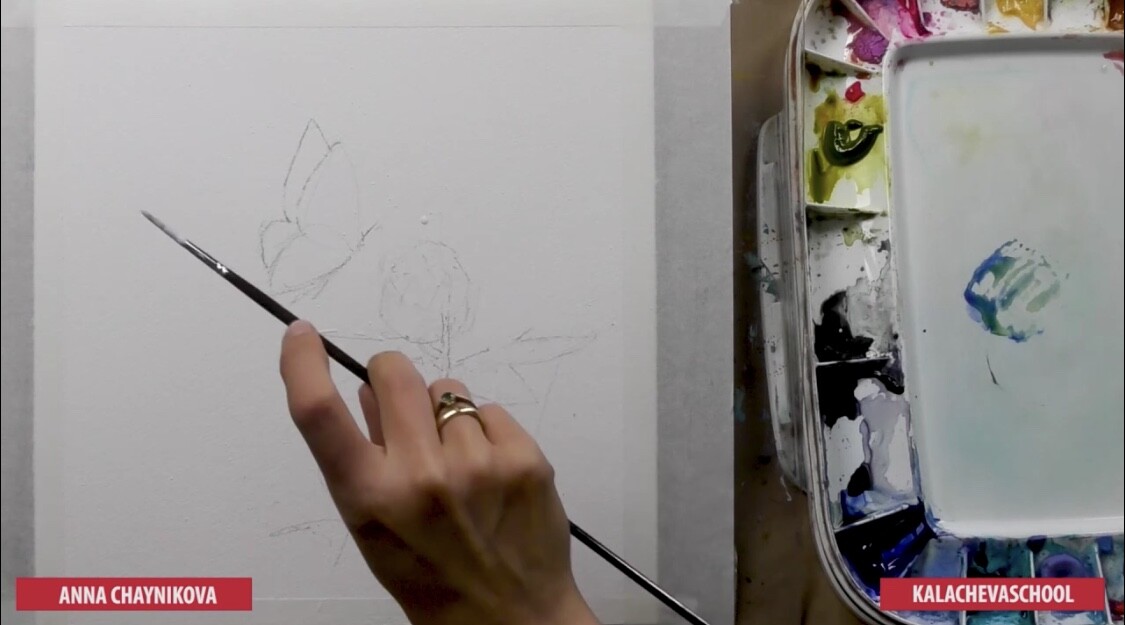
Delicately put a thin line on the mustache of a butterfly. Final strokes around would be beneficial for the effects of light. Do not forget to wash the brush after the mask, and to change the water! Now you can dry this with a dryer.


Before applying the colors see if you need to remove some unnecessary strokes or drops of the mask. It could be added throughout the coloring if needed to make an additional layer.

So now we can create a cool background of a picture. Let’s start with saturating the whole paper canvas with water. Since the edges of a paper dry out faster, move the water from the center toward the ends.
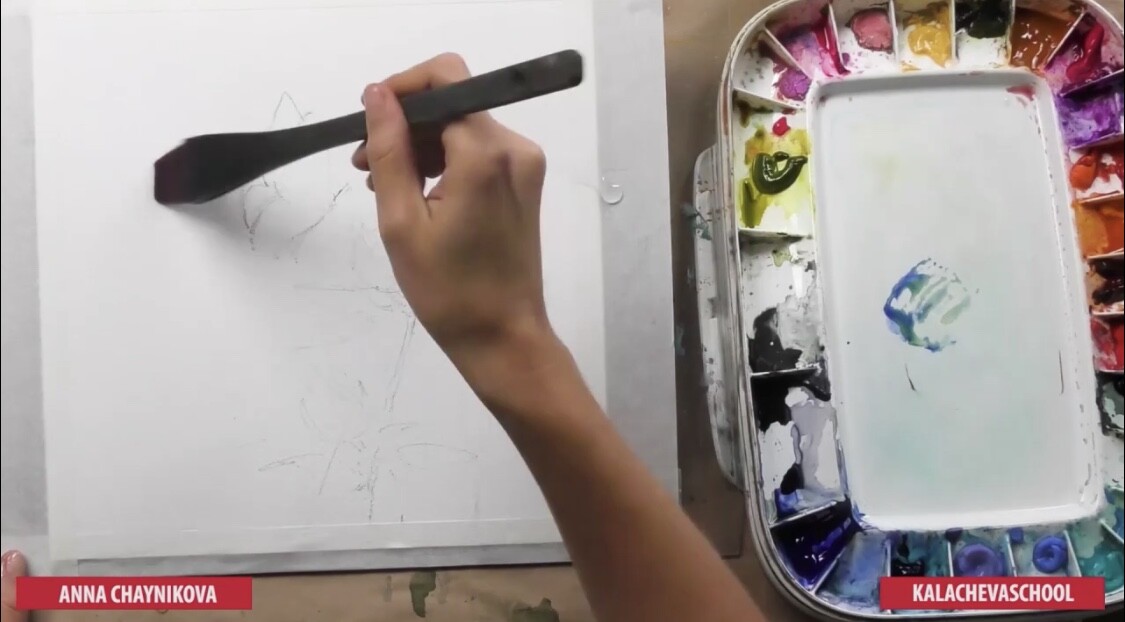
We begin with rose color from the top. Watch out not to apply thick paint. It is better to keep it watery. Make emphasis on a dark side, avoid a butterfly and flowers. Do not worry that it is more intense as a color at first, it will be lighter after the drying.

After applying warm colors, we can move on to cold rose, which will take over the background. Add some specks with no constraint. We are still working with a flutz brush.
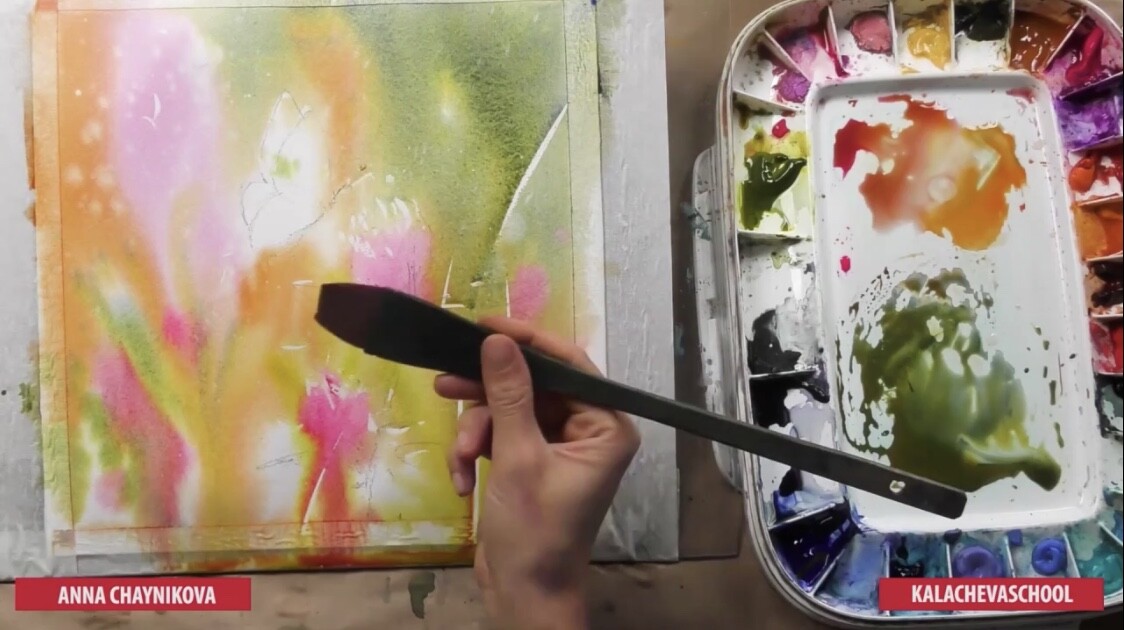
Now we move to darker colors. Ultramarine spreads out beautifully. The picture is ready for the next step. Let’s work with the wings of a butterfly. This area is dry. So we can start mixing colors for the shade. Ultramarine could be mixed with some blue. Make sure it is a transparent color for the wings.
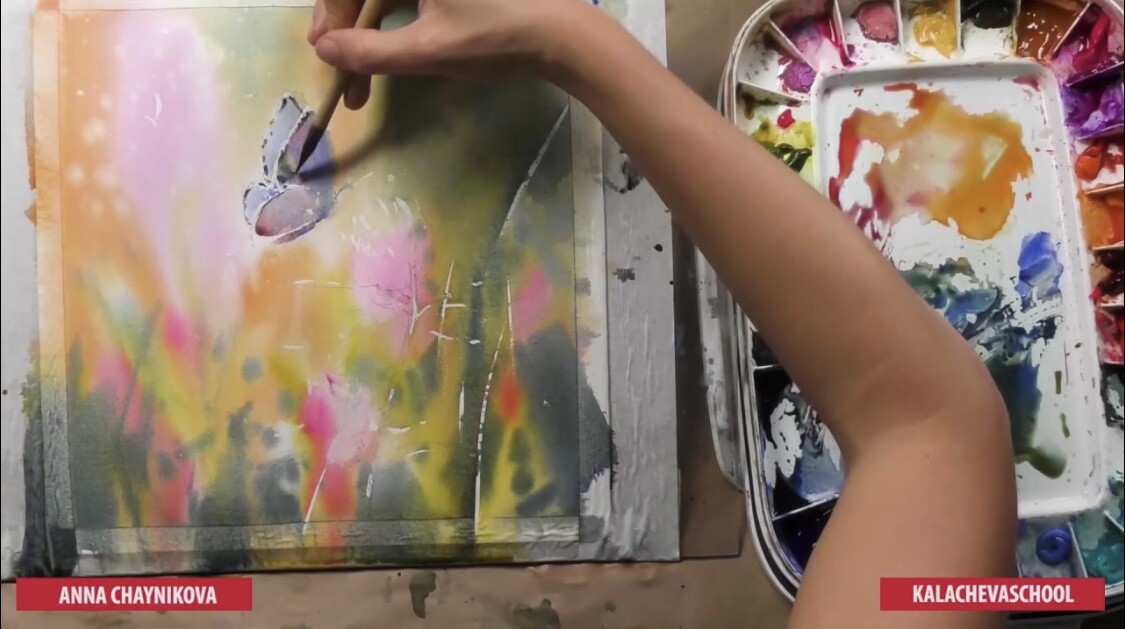
Feel free to maneuver with the brush differently. It is like an extension of a hand. Be careful not to overput brown shades for the wings. The darker outline should be applied carefully. It should make an impression of being deluded in the wings. The watery surface of this area and very gentle strokes will make a light effect of delusion. Watercolor is based on those soft brushstrokes and touches. Wipe out the excess of water with a napkin.
We can move on to the clovers in the transition from rose colors to the blues. Since the surface is dry, the brushstrokes lie down neatly on a paper. Take into account the position of the lighting. We can see how the mask works with this rose color. Switch to another brush to allow some chaotic movements. Draw out the petals. From rose to violet and then blue colors.

The volume starts to appear when there are more than two color tones. Mark the brushstrokes for the leaves. Feel the natural moves of a flower to maneuver with a brush. If you add a dark leaf behind the clover here, it outlines the rose color.

Add dark spots and grass among light shades to accentuate. Spray on water to get this as a result.
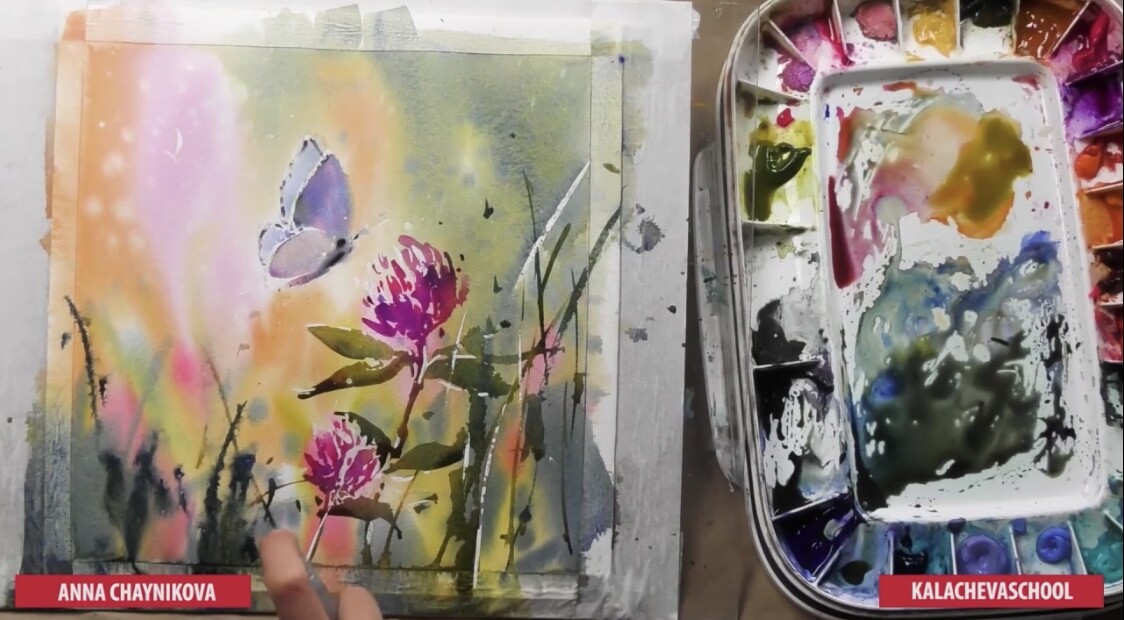
Put some specks and outline the leaves, grass, and a stalk. Use only a special spray for drawing. The same effect could be reached with a brush, but it requires more work and skills.
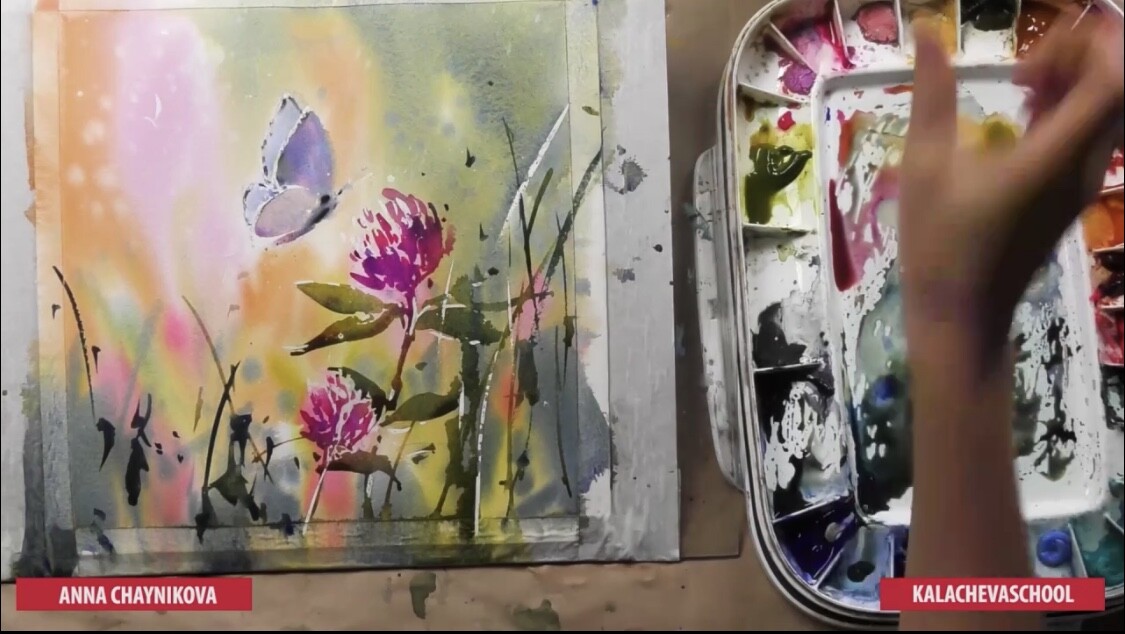
Make some final brushstrokes if needed. The brush should be dry to avoid smudges of details

We dried out the canvas. Now it is time to take off the mask to visualize its effects. It is advised to do it with your finger.
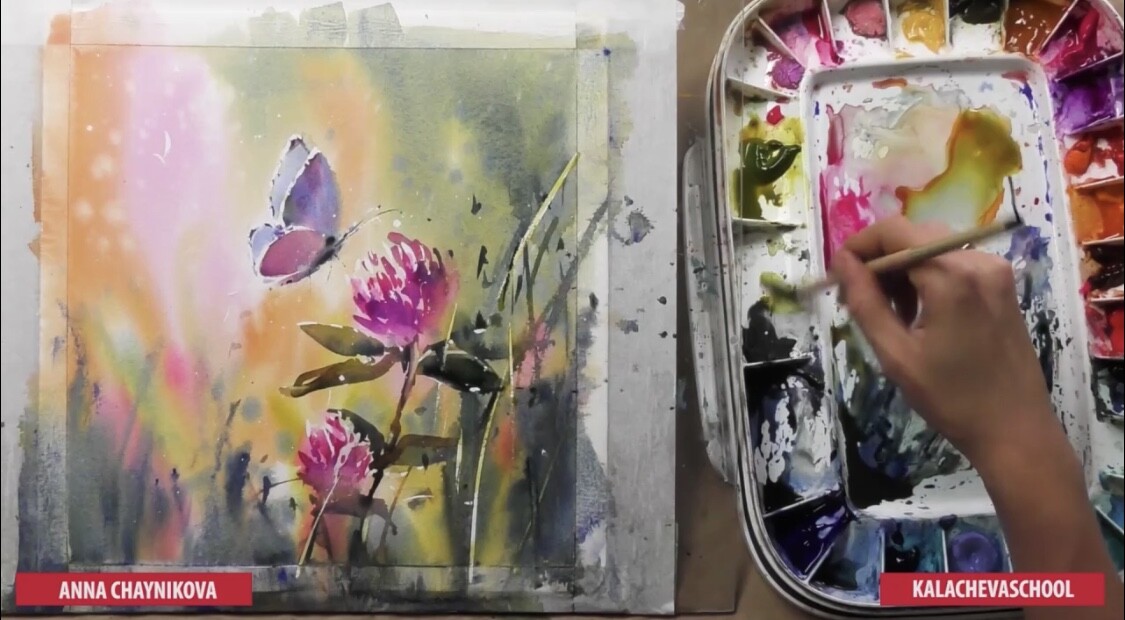
If in some places the mask appears too much, it should be fixed with an appropriate color. Make sure you have soft transitions.

The picture is ready!
The excitement comes with the first watercolor drawing. We would like to share with you the techniques on how to paint a rose.
A professional approach guarantees to accomplish an impressive artwork of pastel painting. Make sure to follow competent advice before the start.
We have designed these short-guided series to get you acquainted with the watercolor world. We have decided to make it so affordable.



inicie sesión, por favor